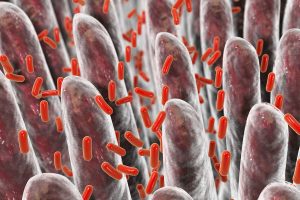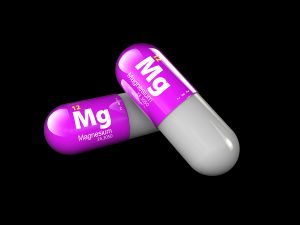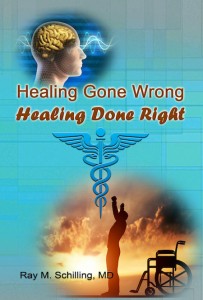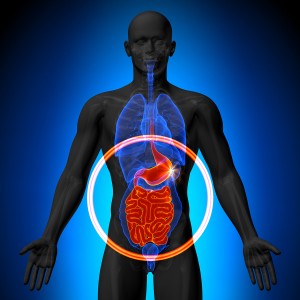Dr. Mark Houston talked about cardiovascular disease and inflammation – “the evil twins”. He presented this lecture at the 24th Annual World Congress on Anti-Aging Medicine (Dec. 9-11, 2016) in Las Vegas. Dr. Houston is an associate clinical professor of medicine at the Vanderbilt University Medical School in Nashville, TN 37232.
New thinking about cardiovascular disease and inflammation
Dr. Houston pointed out that the old thinking about cardiovascular disease is defunct, needs replacing and, of course, that the new thinking needs to take its place. Specifically, here are a number of points regarding the new thinking.
- Coronary heart disease and congestive heart failure are diseases of inflammation. In the same fashion, oxidative stress, vascular immune dysfunction and dysfunction of the mitochondria are also part of them.
- Moreover, in the past it was difficult to reduce these cardiovascular diseases. In contrast, with the new thinking there are now new treatment approaches that help cure cardiovascular disease.
- On the whole, the development of heart disease has a long history. First, endothelial dysfunction predates coronary artery disease by many years. Second, the next step is vascular smooth muscle dysfunction. Finally, inflammation develops and structural changes occur in the small and larger blood vessels with atheromatous deposits (plaques) and final occlusion, at which point you get a heart attack.
New approach to the old problem of plugged coronary arteries
Canadian physician Sir William Osler has already stated more than 100 years ago “A man is as old as his blood vessels”. In the first place, the old thesis was that cholesterol would lead to deposits that close coronary blood vessels and cause heart attacks. Dr. Houston called this the “cholesterol-centric “ approach. In reality, the truth is that with conventional blood tests you are missing 50% of all the high-risk patients that are going to develop heart attacks. They are missing the ones that have chronic inflammation, but normal cholesterol levels.
Coronary artery damage from cholesterol elevation versus inflammation
What was not common knowledge in the past was that oxidative stress associated with normal aging can also lead to chronic low-grade inflammation. This oxidative stress leads to mitochondrial DNA changes. Associated with it are biochemical changes that cause chronic inflammation, which in turn will affect the lining of the arteries. The literature describes a metabolic change that known as metabolic syndrome. It leads to high blood pressure, hardening of the arteries and eventually heart attacks and strokes. Accordingly, the key today is to include in screening tests all parameters that will predict who is at risk to develop a heart attack or not.
Blood tests to screen for cardiovascular disease and inflammation
The physician should check blood tests and health history for dyslipidemia, high blood pressure (hypertension), hyperglycemia, smoking, diabetes, homocysteinemia, obesity etc. Also, patients with high GGTP (gamma-glutamyl transferase) levels in the blood are more at risk to develop diabetes. This in turn leads to inflammation of the arterial wall and heart attacks. There are 25 top risk factors that account for all causes of heart attacks.
Briefly, apart from the 7 factors already mentioned above the physician wants to check for high uric acid levels (hyperuricemia), kidney disease, high clotting factors (fibrinogen levels), elevated iron levels, trans fatty acid levels, omega-3 fatty acid levels and omega-6 to omega-3 ratio, low dietary potassium and magnesium intake with high sodium intake, increased high sensitivity C reactive protein level (hs CRP measuring inflammation).
Further high risk factors for coronary artery disease
The list to test for cardiovascular disease risk continues with blood tests for vascular immune dysfunction and increased oxidative stress, lack of sleep, lack of exercise, subclinical low thyroid levels, hormonal imbalances for both genders, chronic infections, low vitamin D and K levels, high heavy metals and environmental pollutants.
The speaker stated that he includes a hormone profile and vitamin D levels. He does biochemical tests to check for mitochondrial defects. Micronutrients are also checked as cardiovascular patients often have many nutritional deficiencies coupled with cardiovascular factors. Inflammation is monitored through testing the levels of C-reactive protein (CRP).
The Rasmussen score
In order to assess the risk of a patient Dr. Cohen, a cardiologist has developed the Rasmussen score, which is more accurate than the Framingham score.
The following tests are performed on the patient: computerized arterial pulse waveform analysis (medical imaging), blood pressure at rest and following exercise and left ventricular wall of the heart by echocardiography. Further tests include urine test for microalbuminuria, B-type natriuretic peptide (BNP, a measure of congestive heart failure), retinal score based on fundoscopy, intima-media thickness (IMT, measured by ultrasound on the carotid artery) and electrocardiogram recording (EKG).
Here is what the Rasmussen score means:
- With a disease score of 0 to 2: likely no heart attack in the next 6 years
- The disease score is 3 to 5: 5% likely cardiovascular events in the next 6 years
- Disease score > 6: 15% likely cardiovascular events in the next 6 years
Non-intervention tests to measure cardiovascular health
1. The ENDOPAT test
With this test the brachial artery is occluded with a blood pressure cuff for 5 minutes. Endothelial dysfunction is measured as increased signal amplitude. A pre- and post occlusion index is calculated based on flow-mediated dilatation. The values are interpreted as follows: an index of 1.67 has a sensitivity of 82% and specificity of 77% to predict coronary endothelial dysfunction correctly. It also correlates to a future risk for coronary heart disease, congestive heart disease and high blood pressure.
2. The VC Profile
This test measures the elasticity of the arteries. There is a C1 index that measures the elasticity of the medium and smaller vessels and the C1 index, which measures elasticity of the larger arteries and the aorta. The smaller the numbers are, the less elastic the arterial walls.
3.The Corus CAD score
This is a genetically based blood test. The score can be between 0 and 40. If the score is 40, there is a risk of 68% that there is a major blockage in one or more coronary arteries.
4. Coronary artery calcification
The CAC score correlates very well with major event like a heart attack. There is a risk of between 6- and 35-fold depending how high the CAC score is. The key is not to wait until you have calcification in your coronary arteries, but work on prevention.
Treatment of cardiovascular disease and inflammation
When the doctor treats heart disease, all of the underlying problems require treatment as well. It starts with good nutrition like a DASH diet or the Mediterranean diet.
Next anti-inflammatory and other supplements are added: curcumin 500 mg to 1000 mg twice a day, pomegranate juice ¼ cup twice per day, chelated magnesium 500 mg twice per day, aged garlic 1200 mg once daily, taurine 3 grams twice per day, CoQ-10 300 mg twice per day and D-ribose 5 grams three times per day. This type of supplementation helps for chest pain associated with angina. On top of this metabolic cardiology program the regular cardiac medicines are also used.
Additional supplements used in the metabolic cardiology program may be resveratrol 500 mg twice per day, quercetin 500 mg twice per day, omega-3 fatty acid 5 grams per day, vitamin K2 (MK 7) 100-500 micrograms per day and MK4 1000 micrograms per day. In addition he gives 1000 mg of vitamin C twice per day. This program helps in plaque stabilization and reversal and reduction of coronary artery calcification.
Case study showing the effect of metabolic cardiology program
Here is a case study where Dr. Houston treated a heart patient. He was a white male, first treated for congestive heart failure as a result of a heart attack in June 2005. Initially his ejection fraction was 15-20%. His medications were: digoxin 0.25 mg once daily, metoprolol 50 mg twice per day, ramipril 10 mg twice per day, spironolactone 25 mg twice per day and torsemide 20 mg once daily. These medications remained in place, but the patients followed the metabolic cardiology program in addition. Here are the results of his ejection fraction (EF) values after he was started on the metabolic program:
- Initial measurement: EF15-20%. Marked shortness of breath on exertion.
- 3 months: EF 20-25%. He reported improved symptoms.
- 6 months: EF 25-30%. He said that he had now minimal symptoms.
- 12 months: EF 40%. He had no more symptoms.
- 24 months: EF 50%. He reported: “I feel normal and great”.
- 5 years: EF 55%. He said” I feel the best in years”.
A normal value for an ejection fraction is 55% to 70%.
Conclusion
Testing for heart disease risk has become a lot more sophisticated than in the past, and the tests have opened up a window to early intervention. Metabolic cardiology is a new faculty of cardiology that assists in the reversal and stabilization of heart disease. It will help high blood pressure patients and stabilizes diabetes, which would otherwise have deleterious effects on heart disease. Metabolic cardiology improves angina patients. It also prevents restenosis of stented coronary arteries. As shown in one clinical example reduced ejection fractions with congestive heart failure will improve. The metabolic cardiology program achieved all of these improvements.
As usual, prevention is more powerful than conventional treatment later. To give your cardiac health a good start, don’t forget to cut out sugar, exercise regularly and follow a sensible diet.















